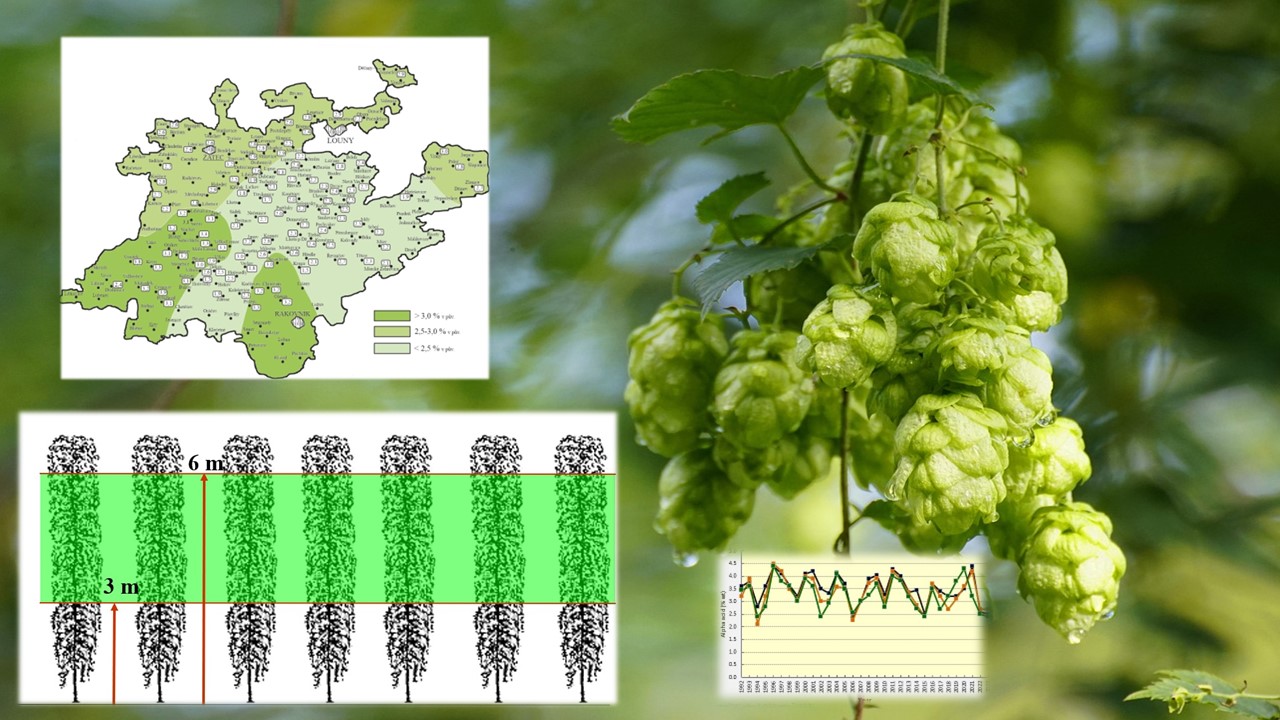Alpha acids content in Czech hops from the 2023 harvest – forecasts, reality and trends
DOI:
https://doi.org/10.18832/kp2024.70.873Keywords:
hops, alpha acids, Saaz hops, hybrid varieties, weather conditionsAbstract
The most important weather factor for the hop growing season in 2023 was the rainy period in the last decade of July and the first decade of August, which replaced the previously warm and dry weather. Heavy rainfall with a total of 60–100 mm of water and temperatures in the range of 20–25 °C saved the annual hop harvest from the yield decline that occurred in 2022. However, the above-average harvest of nearly 7000 tonnes and a yield of 1.44 t/ha was achieved at the expense of the bitter compound content of most varieties. The alpha acid content of Saaz hops was well below 3.0% w/w in all hop-growing regions, one of the lowest levels for the last 10 years. It is even lower than the extremely hot and dry year 2022 and comparable to 2015. Lower levels of alpha acids were also found in Sládek (4.8–6.7% w/w), Premiant (6.9–7.9% w/w) and Saaz Special (4.3% w/w). The varieties Agnus, Rubín and Vital contained stable amounts of alpha acids in the range of 11–13% w/w, which is about the same as in previous years. The total production of alpha acids in Czech hops from the 2023 harvest was 253 tons, which is average in a longerterm comparison. Saaz hops accounted for only 55% of the total production, although they are grown on 83.3% of the harvest area.
References
Anonym (2023). Alpha-säurenwerte von Hopfen der Ernte 2023 und aktualisirte mehrjährige Durchschnittliswerte – Teil 1. Brauwelt, 42, 1082.
Donner, P., Pokorný, J., Ježek, J., Krofta, K., Patzak, J., Pulkrábek, J. (2020). Influence of weather conditions, irrigation and plant age on yield and alpha-acids content of Czech hop (Humulus lupulus L.) cultivars. Plant, Soil and Environment, 66(1), 31–46. https://doi.org/10.17221/627/2019-PSE
EBC Analysis Committee (2010). Analytica EBC, Methods 7.4, 7.7, Fachverlag Hans Carl, Nürnberg. ISBN 978-3-418-00759-5
Forster, A., Schüll, F. (2020). The impact of climate change on hops. Brauwelt International, 40(3), 174–178.
Forster, A., Gahr, A. (2021). The Saaz hop variety – how great is the influence of climate and growing region in the Czech Republic? Hopfen-Rundschau International, 2020/2021, 38–44.
HRI [online]. http://www.chizatec.cz/predskliznove-odbery/?arc=291 [2024-03-15].
Kršková, I. (2023). Sklizeň chmele byla v roce 2023 mírně nadprůměrná. Chmelařství, 96 (11-12), 120–121. (in Czech)
Krofta, K. (2002). Content and composition of hop resins of Saaz hops from the point of view of their brewing value. PhD Thesis, University of Chemistry and Technology, Prague. (in Czech)
Krofta, K., Fritschová, G., Mikyška, A., Belešová, K., Vojtěchová, D., Tichá, J. (2022). Alpha acids content in Czech hops from harvest 2021 - forecasts, reality and trends. Kvasny Prumysl, 68(1), 564–571. https://doi.org/10.18832/kp2022.68.564
Mikyška, A., Krofta, K., Fritschová, G., Belešová, K., Kroupa, K., Tichá, J. (2023). Alpha acids content in Czech hops from harvest 2022 – forecasts, reality and trends. Kvasny prumysl, 69, 692–699. https://doi.org/10.18832/kp2023.69.692
Nesvadba, V., Krofta, K., Patzak, J. (2022). Czech hop varieties. Chmelařský institut, Žatec. ISBN 978-80-86836-60-7.
Sedlmaier, K., Feldmann, H., Schadler, G. (2018). Compound summer temperature and precipitation extremes over central Europe. Theoretical and Applied Climatology, 131, 1493–1501. https://doi.org/10.1007/s00704-017-2061-5

Downloads
Published
How to Cite
Issue
Section
License
Copyright (c) 2024 Karel Krofta, Alexandr Mikyška, Gabriela Fritschová, František Kroupa, Jana Tichá

This work is licensed under a Creative Commons Attribution 4.0 International License.







